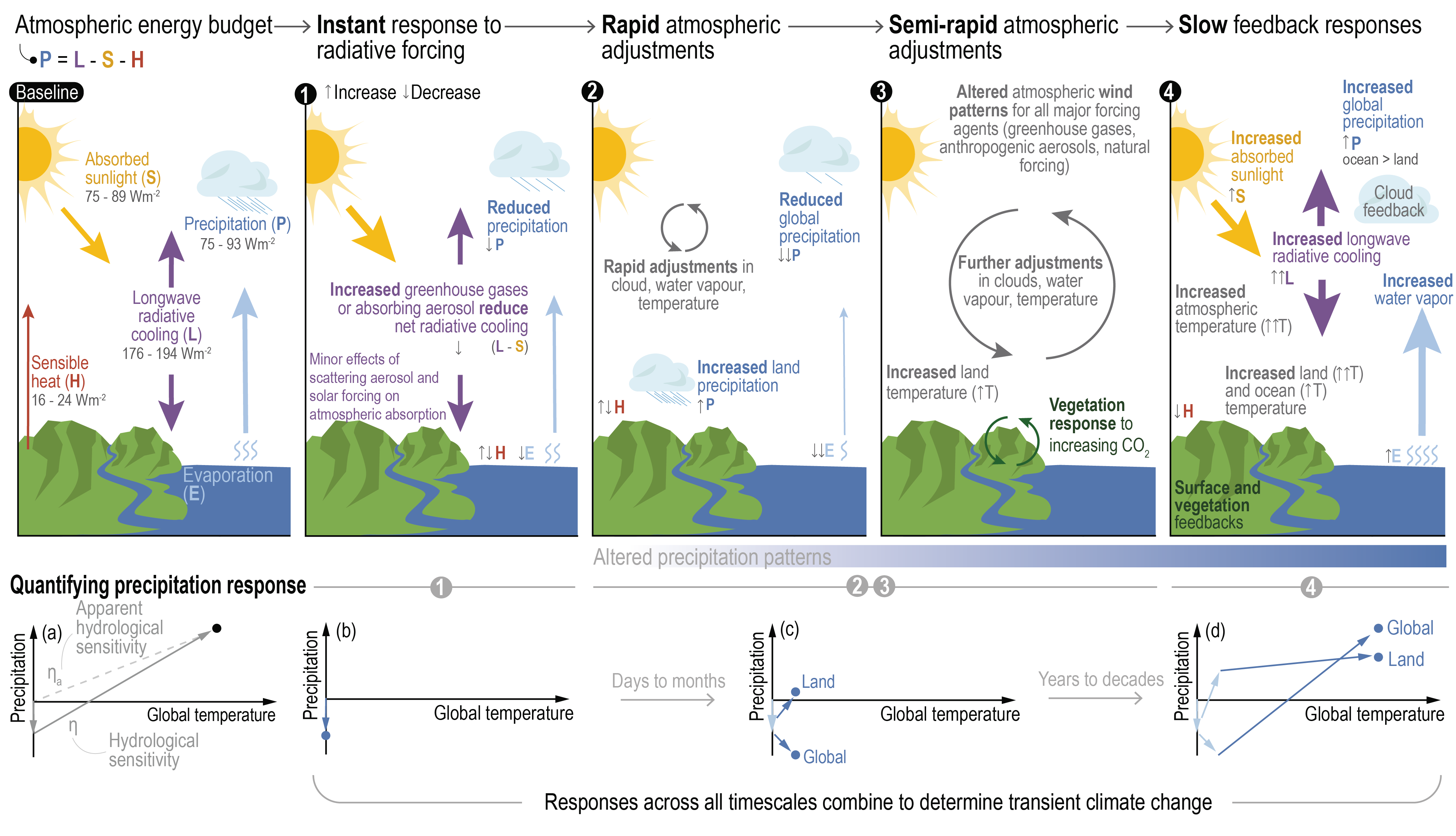Back chapter figures
Figure 8.3
Figure caption
Figure 8.3 | Schematic representation of fast and slow responses of the atmospheric energy balance and global precipitation to radiative forcing. (‘Baseline’panel) The atmospheric energy budget: (1) responds instantaneously to radiative forcings; (2) leading to rapid atmospheric adjustments; and (3) slower semi‐rapid adjustments involving the land surface and vegetation that further modify atmospheric circulation patterns. (4) This slow precipitation response to global mean surface air temperature is quantified as (a) the hydrological sensitivity, η, and the total precipitation response, including initial rapid adjustments, is termed the apparent hydrological sensitivity, ηa. (b–d) The slow precipitation response over land and ocean develops over time. Large, filled arrows (in panels from ‘baseline’ to 4) depict fluxes or circulation change while small arrows (1–4) denote increases (↑) or decreases (↓) in variables (P is precipitation; L is atmospheric longwave radiative cooling; S is solar radiation absorption by the atmosphere; H is sensible heat flux; E is surface evaporative heat flux; and T is temperature). Adapted from Allan et al. (2020) with statistics taken from Figures 7.2 and Figure 8.1.
